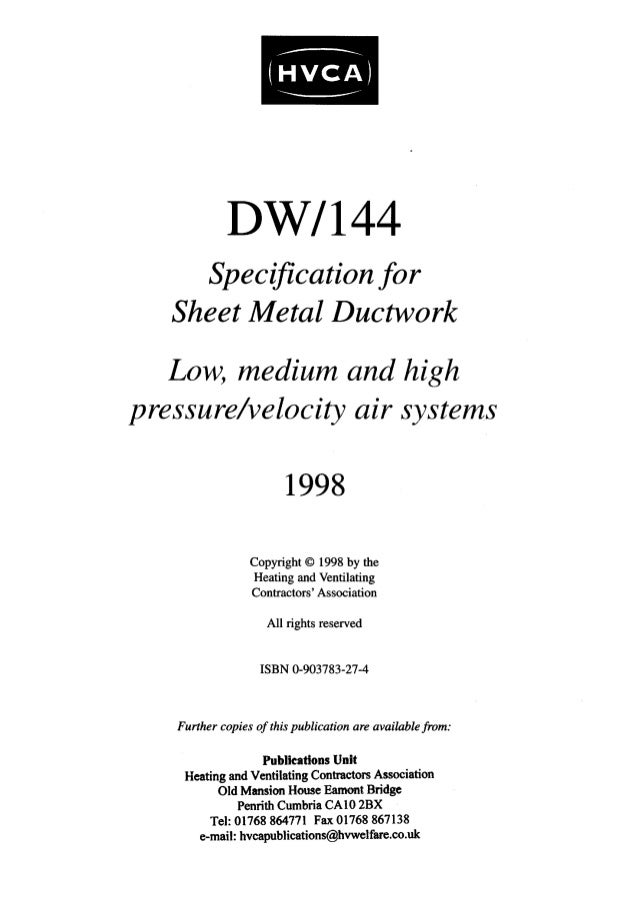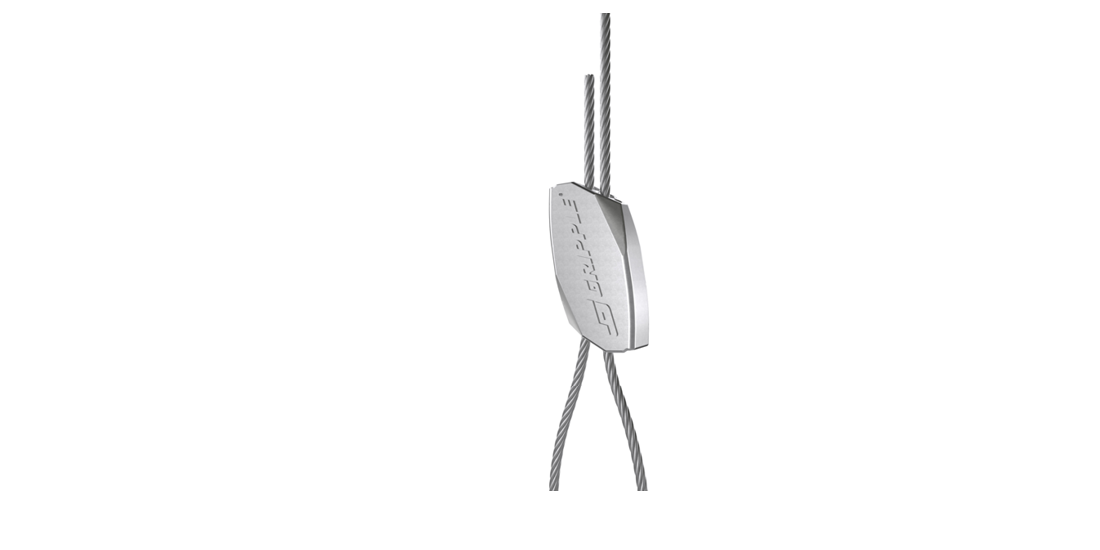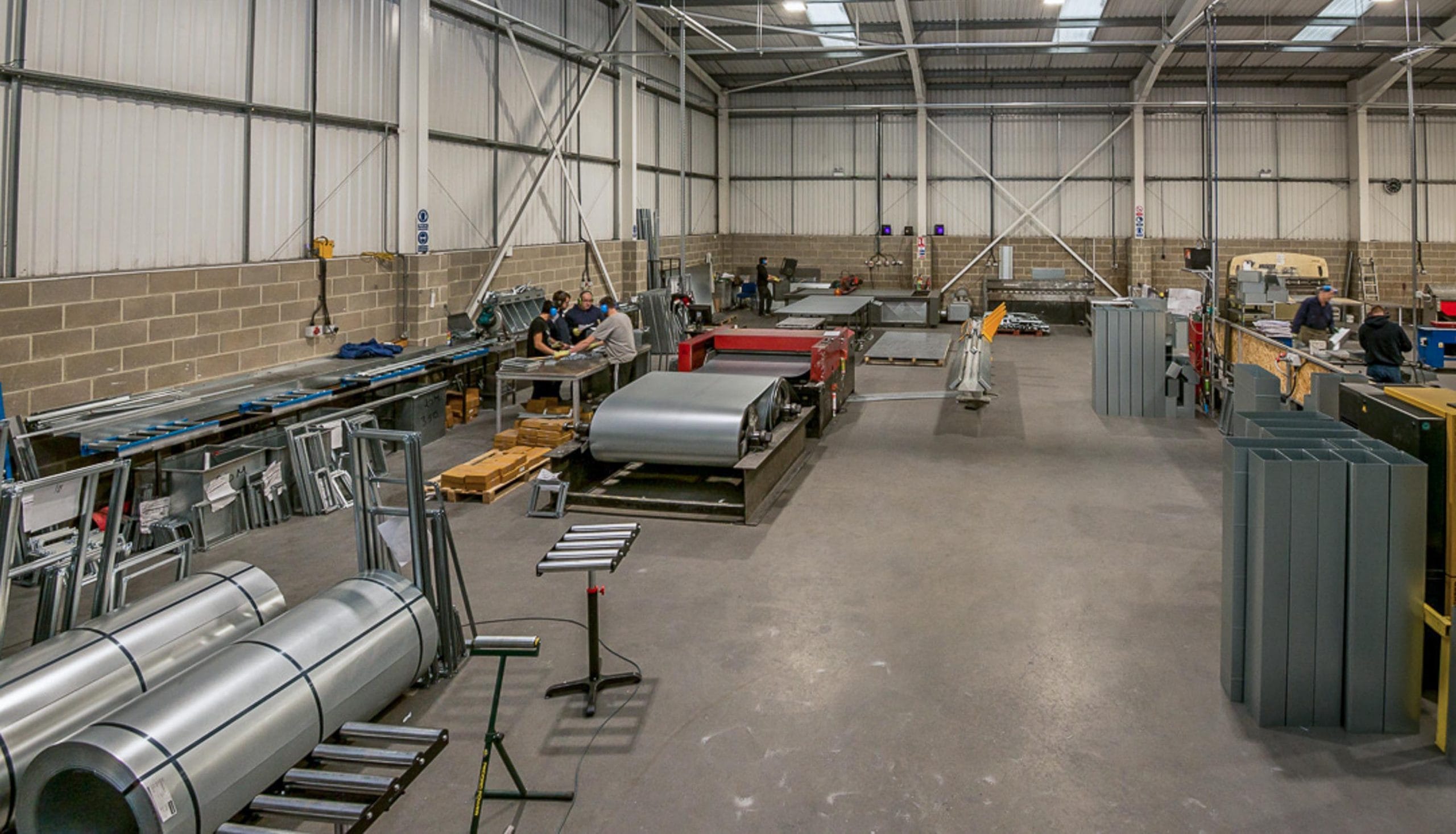

Testing must be satisfactorily completed before insulation or enclosure of the ductwork and before any terminal units are fitted. There is more information about manufacturing requirements, with detailed illustrations, in DW/144.Īt the installation stage, the extent of the ductwork to be tested and the method of selection (where not included in the design specification) should be determined between the system designer and the ductwork contractor. Materials used should be suitable for the purpose intended and satisfy the specified pressure classification. In manufacturing, the integrity of ductwork depends on the successful application of the correct sealant, gaskets or tape and suitability for operating temperatures up to 70☌.

This means the practice of specifying construction standards for whole duct systems based on fan discharge pressures may incur unnecessary costs. It is important to note that system designers can achieve significant cost savings by matching operating pressures throughout the system to constructional standards and appropriate air leakage testing. DW/144 specifies permissible leakage figures.

For Class B, the permissible leakage rate is 0.009 litres per second per square metre and, for Class A, it is 0.027.Ĭonsiderations during design, manufacture and installationĪt the design stage, it is possible to forecast with reasonable accuracy the total loss from a system by calculating the operating pressure in each section, the surface area of the ductwork in each corresponding pressure section and the allowable loss at the operating pressure for each section. It is generally accepted, however, that, in typical, good quality systems, the leakage under operating conditions will be in the region of six per cent for low pressure systems (class A), three per cent for medium pressure systems (Class B), two per cent for high pressure systems (Class C) and just 0.5 per cent for the highest pressure systems (Class D).įor Class C and D systems - with a maximum air velocity of 40m/s and static pressure limits of 2,000 Pa positive (compared with 500 Pa for Class A and 1,000 Pa for Class B) and 750 Pa negative – permissible air leakage is only 0.001 and 0.003 litres per second per square metre of duct surface area. Similarly, the operating pressure will vary throughout the system and, as leakage is related to pressure, the calculations are complex. Although there is no precise formula for calculating the level of air loss, it is generally accepted that leakage will increase in proportion to pressure to the power of 0.65.Īs there is no direct relationship between the volume of air conveyed and the surface area of the ductwork system required to match the building configuration, it is difficult to express air leakage as a percentage of total air volume. For cost reasons, testing of ductwork designed to operate at low and medium pressures or velocities is required only when stipulated in individual job specifications.Īir leakage from sheet metal ducts occurs at the seams and joints and is therefore proportional to the total surface area of the ductwork and related to the air pressure in the system. It will also ensure that energy and operational costs are kept to a minimum.īuilding Regulation ADL2A for new buildings and regulation ADL2B for existing buildings state that leakage testing “should be carried out in accordance with the procedures set out in B&ES DW/144.” Recognised as the standard against which the quality of ductwork manufacture and installation should be measured, DW/144: Specification for Sheet Metal Ductwork stipulates that leakage testing of high-pressure ductwork is mandatory. A ductwork system that has limited air leakage, within defined limits, will ensure that the design characteristics of the system can be maintained.

Peter Rogers chairman of the B&ES Ductwork Group Technical Committee explainsĪir leakage from ducted distribution systems is an important consideration in the design and operation of ventilation and air conditioning systems. The Building Regulations require ductwork leakage testing, with implications for designers, installers, and maintenance contractors.


 0 kommentar(er)
0 kommentar(er)
